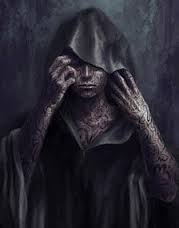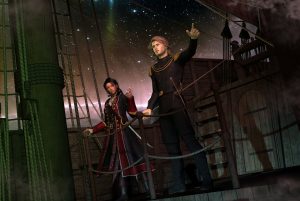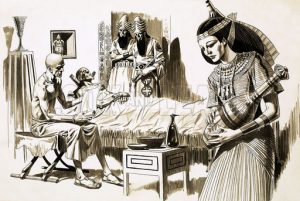A nice round 11 stats
Deconstructing Rolemaster a little, the stats system is not particularly outstanding. The whole stats system lacks conviction, there is one option to use just a single stat bonus with skills, another to use the average of two or three stats and the latest version with smaller stat bonuses that are added together. If you bring HARP into the frame then there are 8 stats, in Rolemaster there are 10 stats if you ignore the poor relation of Appearance that makes 11 stats.
Appearance is rolled like all the other stats but then modified by Presence. Take a look at this example from the RMC Character Law pg33
Example 2: Linthea is 6’1″ and 170 pounds. Tall and lithe, she stands out among humans. Her hair is a deep brown, and is quite pretty when down, but most often kept tied in a bun at the back of her head. Her green eyes have a slightly slitted pupil, and her pointed ears also show her elvish ancestry, though she has earlobes like a human. Lauren rolls a 38 for appearance, +10 for Linthea’s presence modification. A 48 is slightly below average, the GM explains that her half human appearance is found odd by the elves. Among humans Linthea is considered exotic and attractive, though she sees herself as plain. Her persona is quite friendly for an elf, but among humans she comes across as reserved, mysterious, and a trifle odd.
The bold text is added by me to highlight the pertinent point. No other stat is modified in this way. All the other stats are pretty much 1-100 for ‘normal’ people but not Appearance. Appearance works on a -24 to 125 scale.
Appearance gives no stat bonus and is not relevant to any skills
Rolemasterisms
This is one of those “Rolemasterisms”. I have complained in the past about how the skill system is so inconsistent. To put it briefly some skills cancel out minuses such as armour skills, some are 101+ for success or failure, some are incremental, some give +5 per rank (then +2, +½ etc.), some give +1 for every rank. Most have stat bonuses, some have none, some use one pricing rule like weapons, and musical instruments and others use a different system (the 2/6 for two ranks). Some are disposable, like spell lists where once you have the list you discard the ranks (this is important if a caster stops learning a one list to start another) and so on. There are so many variations it is hard to keep track. Don’t get me started on the skills with special rules and the ones with almost magical powers like the adrenal moves, disarming, iai strike and stunned maneuver!
DB, DP & Hits
The stats situation is not as bad but it is in the same vein. Some stats give development points, some don’t, some stats are used only for stat bonuses but others like Constitution and Quickness have a massive impact, hits and DB in this case. Then you get powerpoints. You have a different stat depending on your realm, or the average if you are a hybrid.
If you have high stats at 1st level then if all things are equal then you will massivelyh out strip your companions in experience and levels as you get more DPs, so more skills, so you can do more and earn more experience.
At mid to higher level stats are irrelevent. You may have a total skill bonus of +150 or more but the difference between a character with an average stat of about 50 and an exceptional character with a 90 is just ±10 on that total.
All in all if you look at Rolemaster stats too closely you see just what a hodge podge they really are.









